Triticum aestivum cultivars
Overview
The 10+ Wheat Genomes Project is a global partnership that leverages collaborative expertise and funding with the aim to characterise the wheat pan-genome. Created in 2011 following endorsement from the G20 Agriculture Ministries, the Wheat Initiative provides a framework to establish strategic research and organization priorities for wheat research at the international level in both developed and developing countries. Seeds of all cultivars included in the project can be ordered for research use through the Germplasm Resources Unit at the John Innes Centre, UK. This also includes additional info about country source and sowing season. Please visit the SeedStor for more information.
10+ Wheat Genome Lines
The 10+ Wheat Genome Project has completed its goal of generating chromosome pseudomolecule assemblies for 10 wheat cultivars and 5 scaffold assemblies. These cultivars were selected by each of the global partners to represent genetic diversity typical of breeding programs in their agroecological zones. Genome sequences have been assembled to reference quality using the NRgene DeNovo Magic 3.0 software for pseudomolecule assemblies.
Genes
High confidence de novo predictions called by PGSB and EI are available for chromosome level assemblies.
Projected genes are also available for all assemblies from the IWGSC RefSeq v1.1 annotation.
UK Wheat Lines
Five wheat lines chosen for their importance in breeding and research in the United Kingdom have been sequenced and displayed in Ensembl as part of our contribution to the Designing Future Wheat project. This includes Claire, Cadenza, Paragon, Robigus and Weebill.
These scaffold-level assemblies were sequenced at the Earlham Institute as part of the wheat pan genome. Sequencing was performed on an Illumina HiSeq 2500 instrument with a 2x250 bp read metric targeting 45x raw coverage of the amplification-free library and 25x coverage of a combination of mate-pair libraries with inserts sizes >7 Kbp. Between 44 and 51x paired-end genome coverage was generated per line. Contigging was performed using the w2rap-contigger using k=200. Two mate-pair libraries were produced for each line except Weebill, where five libraries were used. Mate-pairs were processed, filtered and used to scaffold contigs as described in the w2rap pipeline. Scaffolds less than 500bp were removed from the final assemblies. The K-mer Analysis Toolkit was used to validate scaffolds by generating a kmer histogram from the matrix of kmers shared between the paired-end reads and the scaffolds.
Paragon genome is updated from scaffold to chromosome assembly. The genome was sequenced and assembled at Earlham Institute using PacBio HiFi reads (33x coverage) and Oxford Nanopore ultra-long reads (17x coverage), then scaffolded using Omni-C reads to generate a chromosome-scale assembly. This resource was produced as part of the UK Biotechnology and Biological Sciences Research Council's Delivering Sustainable Wheat project.
IWGSC RefSeq v2.1
The genome assembly of the reference Triticum aestivum cv. Chinese Spring (IWGSC RefSeq v1.0) was revised using whole genome optical maps and contigs assembled from whole-genome-shotgun (WGS) PacBio SMRT reads. PacBio contigs were used for gap closing. Pseudomolecules of the Chinese Spring 21 chromosomes were re-constructed to develop a new reference sequence, IWGSC RefSeq v2.1. The revisions involved approximately 10% sequence length of the IWGSC RefSeq v1.0.
- Walkowiak, S., Gao, L., Monat, C. et al. Multiple wheat genomes reveal global variation in modern breeding. Nature (2020). https://doi.org/10.1038/s41586-020-2961-x
- Tingting Zhu, Le Wang, Hélène Rimbert et al. Optical maps refine the bread wheat Triticum aestivum cv. Chinese Spring genome assembly. The Plant Journal (2021). https://onlinelibrary.wiley.com/doi/epdf/10.1111/tpj.15289
| Cultivar | Scientific name | Ensembl Assembly | Accession | More information |
|---|---|---|---|---|
 Triticum aestivum Alchemy Triticum aestivum AlchemyView example location | Karyotype and statistics | Triticum aestivum | GCA951799155v1 | GCA_951799155.1 | |
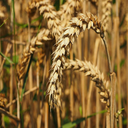 Triticum aestivum Arinalrfor Triticum aestivum ArinalrforView example location | Karyotype and statistics | Triticum aestivum | PGSBv2.1 | GCA_903993985.1 | |
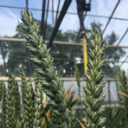 Triticum aestivum Cadenza Triticum aestivum CadenzaView example location | Karyotype and statistics | Triticum aestivum | EIv1.1 | GCA_902810645.1 | |
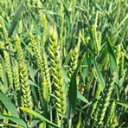 Triticum aestivum Claire Triticum aestivum ClaireView example location | Karyotype and statistics | Triticum aestivum | EIv1.1 | GCA_902810655.1 | |
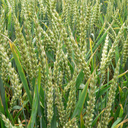 Triticum aestivum Jagger Triticum aestivum JaggerView example location | Karyotype and statistics | Triticum aestivum | PGSBv2.1 | GCA_903993795.1 | |
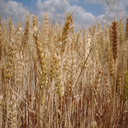 Triticum aestivum Julius Triticum aestivum JuliusView example location | Karyotype and statistics | Triticum aestivum | PGSBv2.1 | GCA_903994195.1 | |
 Triticum aestivum Kariega Triticum aestivum KariegaView example location | Karyotype and statistics | Triticum aestivum | Tae_Kariega_v1 | GCA_910594105.1 | |
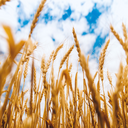 Triticum aestivum Lancer Triticum aestivum LancerView example location | Karyotype and statistics | Triticum aestivum | PGSBv2.1 | GCA_903993975.1 | |
 Triticum aestivum Landmark Triticum aestivum LandmarkView example location | Karyotype and statistics | Triticum aestivum | PGSBv2.1 | GCA_903995565.1 | |
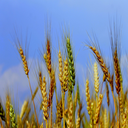 Triticum aestivum Mace Triticum aestivum MaceView example location | Karyotype and statistics | Triticum aestivum | PGSBv2.1 | GCA_903994175.1 | |
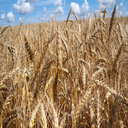 Triticum aestivum Sy Mattis Triticum aestivum Sy MattisView example location | Karyotype and statistics | Triticum aestivum | PGSBv2.1 | GCA_903994185.1 | |
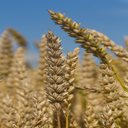 Triticum aestivum Norin61 Triticum aestivum Norin61View example location | Karyotype and statistics | Triticum aestivum | PGSBv2.1 | GCA_904066035.1 | |
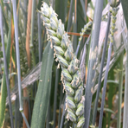 Triticum aestivum Paragon Triticum aestivum ParagonView example location | Karyotype and statistics | Triticum aestivum | GCA949126075v1 | GCA_949126075.1 | |
 Triticum aestivum Refseqv2 Triticum aestivum Refseqv2View example location | Karyotype and statistics | Triticum aestivum | IWGSC_RefSeq_v2.1 | GCA_018294505.1 | |
 Triticum aestivum Renan Triticum aestivum RenanView example location | Karyotype and statistics | Triticum aestivum | Triticum_aestivum_Renan_v2.1 | GCA_937894285.1 | |
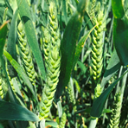 Triticum aestivum Robigus Triticum aestivum RobigusView example location | Karyotype and statistics | Triticum aestivum | EIv1.1 | GCA_902810685.1 | |
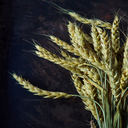 Triticum aestivum Stanley Triticum aestivum StanleyView example location | Karyotype and statistics | Triticum aestivum | PGSBv2.2 | GCA_903994155.1 | |
 Triticum aestivum Weebill Triticum aestivum WeebillView example location | Karyotype and statistics | Triticum aestivum | WeebilV1 | GCA_902810675.1 |



![Follow us on Twitter! [twitter logo]](/i/twitter.png)
